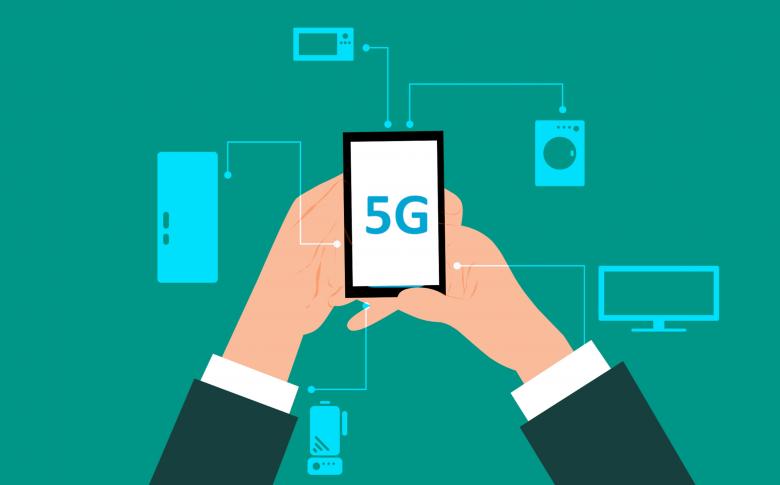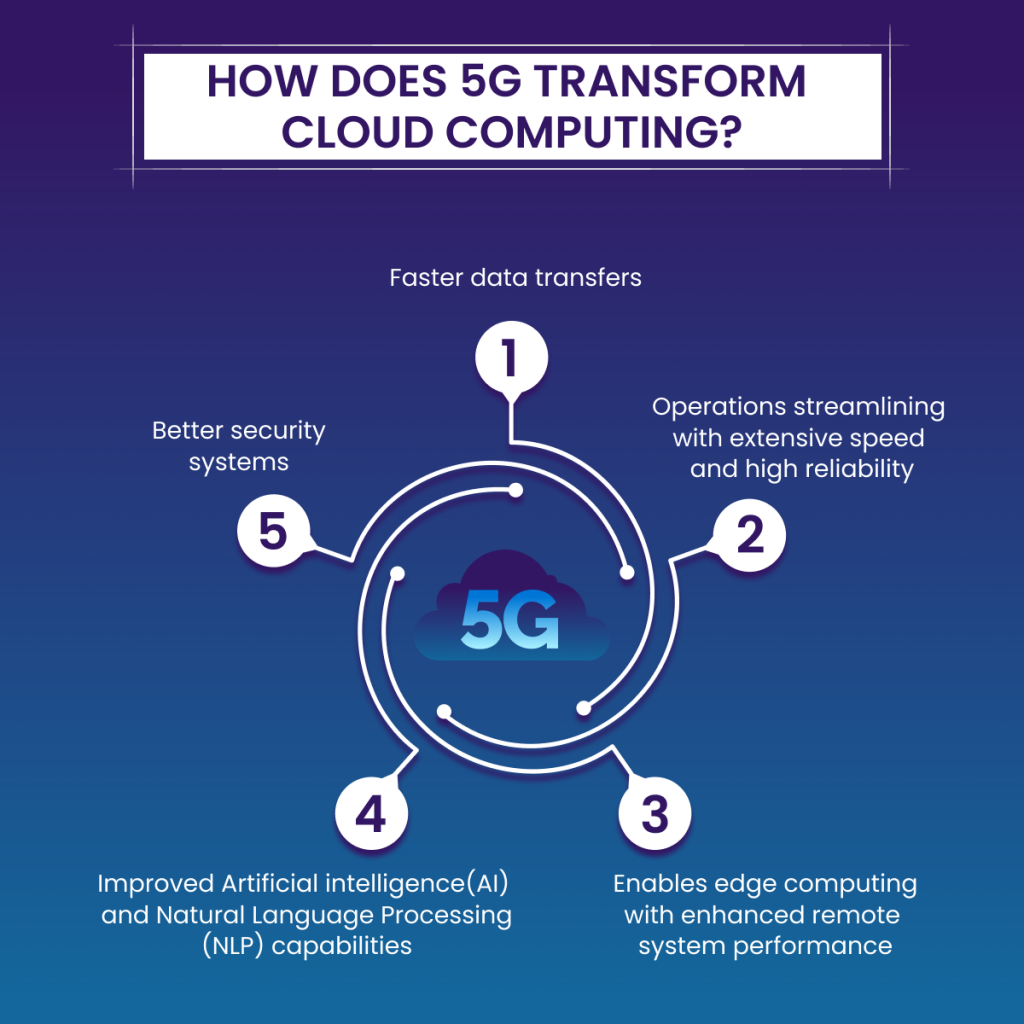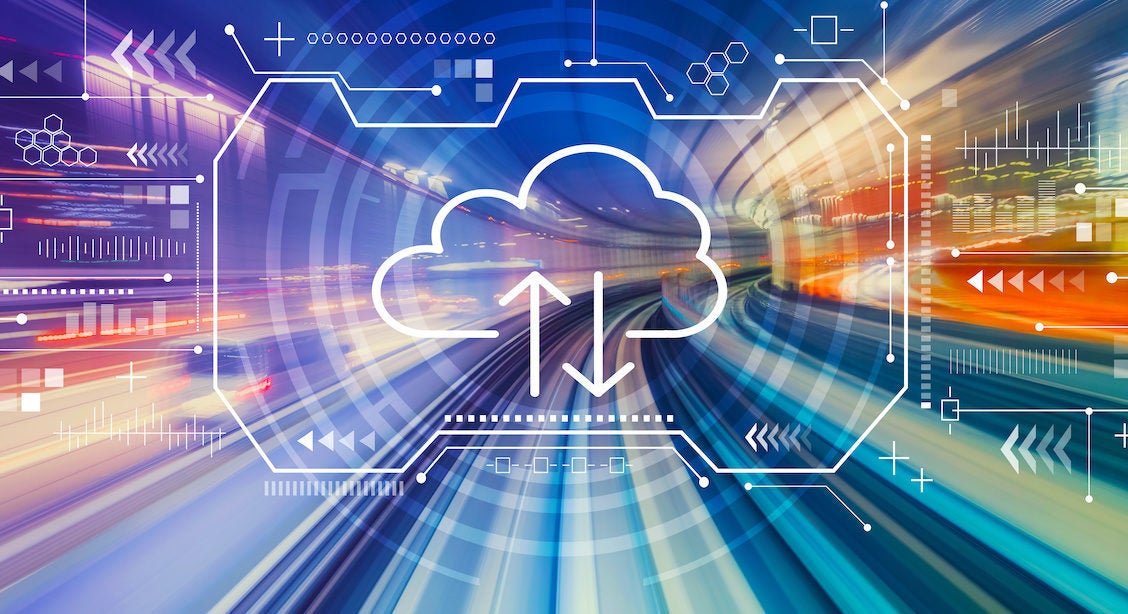5G impact on cloud computing is revolutionizing how we interact with data and applications. The increased speed, lower latency, and enhanced bandwidth offered by 5G networks are fundamentally altering cloud architecture, resource allocation, and application deployment. This transformative technology is driving innovation across numerous sectors, from enhancing mobile edge computing to accelerating artificial intelligence and enabling the seamless integration of the Internet of Things (IoT).
This exploration delves into the multifaceted relationship between 5G and cloud computing, examining its impact on various aspects, including network slicing, data volume management, cloud-native applications, and security implications. We will also discuss the evolving cloud service models and future trends shaping this dynamic landscape.
Enhanced Mobile Edge Computing (MEC)

5G’s impact on cloud computing extends far beyond simple speed increases; it fundamentally alters the architecture and functionality of cloud services through the rise of Enhanced Mobile Edge Computing (MEC). MEC brings computation and data storage closer to the user, at the edge of the network, significantly impacting latency and resource allocation. This proximity minimizes the distance data travels, resulting in faster response times and improved application performance.
The low latency characteristics of 5G are pivotal to the successful deployment and widespread adoption of MEC. Traditional cloud computing relies on centralized data centers, often located far from the end-user. This distance introduces significant latency, which can be detrimental to real-time applications such as augmented reality (AR), virtual reality (VR), and autonomous driving. 5G’s ultra-low latency, typically in the range of 1-10 milliseconds, allows for the seamless execution of these latency-sensitive applications by offloading processing to edge servers. This efficient resource allocation ensures optimal performance and minimizes the strain on the core cloud infrastructure.
5G’s low latency and high bandwidth significantly enhance cloud computing capabilities, enabling faster data processing and real-time applications. This increased efficiency is further amplified by advancements in artificial intelligence, as discussed in this insightful article on The role of AI in cloud evolution. Ultimately, the synergy between 5G and AI promises to revolutionize cloud-based services, driving innovation across numerous sectors.
4G vs. 5G Network Performance in Cloud Applications
The difference in performance between 4G and 5G networks when deploying cloud applications is substantial, particularly regarding response times and bandwidth utilization. 4G’s higher latency and lower bandwidth compared to 5G lead to noticeable performance bottlenecks.
| Network Type | Latency (ms) | Bandwidth (Mbps) | Application Performance |
|---|---|---|---|
| 4G LTE | 50-100 | 10-100 | Noticeable delays in real-time applications; buffering and lag common; limited bandwidth for high-resolution streaming. |
| 5G | 1-10 | 100-1000+ | Near real-time response; smooth streaming of high-resolution video and data; supports demanding applications like AR/VR and autonomous driving. |
Security Challenges and Mitigation Strategies in 5G MEC
The distributed nature of MEC in a 5G environment introduces unique security challenges. Because data processing and storage are spread across numerous edge servers, securing each location and the communication channels between them becomes crucial. Traditional centralized security models are less effective in this decentralized environment. Potential threats include unauthorized access to edge servers, data breaches during transmission, and denial-of-service attacks targeting specific edge locations.
Mitigating these risks requires a multi-layered security approach. This includes robust access control mechanisms for each edge server, employing encryption protocols for data transmission between devices and edge servers, and implementing intrusion detection and prevention systems to monitor for malicious activity. Regular security audits and updates to edge server software are also essential. Furthermore, leveraging technologies like blockchain for secure data management and utilizing micro-segmentation to isolate different application workloads within the edge infrastructure can significantly enhance security posture.
5G’s low latency and high bandwidth significantly boost cloud computing capabilities, enabling faster data processing and real-time applications. Understanding the fundamentals of cloud computing is key to grasping this impact; for a helpful overview, check out this guide on Cloud computing basics. This enhanced connectivity, in turn, fuels the growth of cloud-based AI and IoT services, further showcasing 5G’s transformative influence.
Cloud-Native Applications and Microservices

5G’s transformative impact extends significantly to the realm of cloud-native applications and microservices. The combination of high bandwidth and ultra-low latency offered by 5G networks creates a fertile ground for the development and deployment of these modern, agile architectures. This allows for unprecedented levels of responsiveness and scalability, features that were previously challenging to achieve with traditional network infrastructures.
The high bandwidth of 5G facilitates the rapid transfer of large volumes of data required by cloud-native applications, which often involve complex interactions between numerous microservices. Low latency, on the other hand, minimizes delays in communication between these services, resulting in improved application performance and a more seamless user experience. This synergy between 5G capabilities and cloud-native principles is revolutionizing various sectors, from real-time gaming and augmented reality applications to industrial IoT and autonomous vehicle systems.
Scalability and Resilience of Cloud-Native Applications on 5G
Deploying cloud-native applications on 5G networks offers substantial advantages in scalability and resilience compared to traditional architectures. Traditional monolithic applications, with their tightly coupled components, often struggle to adapt to fluctuating demands. Scaling these applications typically involves deploying additional instances of the entire application, a process that can be time-consuming and resource-intensive. In contrast, cloud-native applications, built on microservices, allow for independent scaling of individual components. This granular scalability enables efficient resource utilization and optimized performance under varying load conditions. 5G’s high bandwidth and low latency further enhance this capability, enabling seamless scaling and rapid response to unexpected surges in demand. The inherent resilience of microservices, where the failure of one service doesn’t necessarily bring down the entire application, is also amplified by 5G’s reliable and robust network infrastructure. This ensures higher availability and improved fault tolerance. For instance, a real-world example would be a large-scale online shopping platform. During peak shopping seasons like Black Friday, a traditional architecture might struggle to handle the traffic, leading to slowdowns and outages. However, a cloud-native application deployed on a 5G network can dynamically scale its individual microservices to accommodate the increased demand, ensuring a smooth and uninterrupted shopping experience.
Advantages and Disadvantages of Cloud-Native Applications in a 5G Environment
The following table summarizes the advantages and disadvantages of utilizing cloud-native applications within a 5G environment:
| Advantage | Disadvantage | Advantage | Disadvantage |
|---|---|---|---|
| Increased scalability and flexibility | Increased complexity in development and management | Improved resilience and fault tolerance | Requires skilled DevOps expertise |
| Enhanced application performance due to low latency | Potential security challenges due to distributed nature | Cost-effective resource utilization | Requires robust monitoring and logging systems |
| Faster deployment cycles | Debugging and troubleshooting can be more challenging | Better adaptability to changing business needs | Integration with legacy systems may require effort |
IoT and Cloud Integration: 5G Impact On Cloud Computing
The convergence of 5G and the Internet of Things (IoT) is revolutionizing cloud computing, creating a powerful synergy that unlocks unprecedented opportunities across various industries. 5G’s high bandwidth, low latency, and enhanced reliability provide the ideal infrastructure for connecting and managing massive numbers of IoT devices, while cloud computing offers the scalability and processing power needed to handle the resulting data deluge. This integration allows for real-time data analysis, improved decision-making, and the development of innovative applications previously unimaginable.
This symbiotic relationship between 5G, IoT, and cloud computing is fundamentally reshaping how data is collected, processed, and utilized. The ability to transmit vast quantities of data from numerous devices with minimal delay empowers applications demanding immediate responses, such as autonomous driving, smart grids, and industrial automation. The cloud’s ability to store, process, and analyze this data then allows for the creation of sophisticated insights and predictive models that drive efficiency and innovation.
Challenges in Managing and Securing Massive IoT Data in the Cloud with 5G Connectivity
Managing and securing the massive influx of data generated by IoT devices connected via 5G networks presents significant challenges. The sheer volume, velocity, and variety of this data (often referred to as “big data”) demand robust and scalable solutions. Security concerns are paramount, given the potential for vulnerabilities and attacks targeting both the devices and the cloud infrastructure.
The key challenges include data volume and velocity, requiring efficient data ingestion and processing techniques; data variety, demanding adaptable data models and analytics; data veracity, necessitating robust data validation and quality control mechanisms; data security, requiring comprehensive security protocols and access controls across the entire ecosystem; and ensuring data privacy, complying with relevant regulations and maintaining user trust. These challenges necessitate a multi-faceted approach involving advanced technologies like edge computing, data analytics platforms, and robust security frameworks.
System Architecture for Seamless IoT, 5G, and Cloud Integration
A robust system architecture is crucial for seamless integration of IoT devices, 5G networks, and cloud platforms. This architecture typically involves several key components working in concert. Imagine a system where IoT devices (e.g., sensors, actuators) at the edge of the network collect data. This data is then transmitted via the 5G network, leveraging its high bandwidth and low latency characteristics for efficient and timely data transfer. A crucial component is often the inclusion of an edge computing layer, which pre-processes data before sending it to the cloud, reducing bandwidth consumption and latency. Finally, the cloud platform serves as the central repository for data storage, processing, and analysis, enabling sophisticated applications and services. Security measures, such as encryption and access control mechanisms, are integrated throughout the entire architecture to protect data integrity and confidentiality. This architecture could be visualized as a layered structure, with IoT devices at the bottom, 5G network in the middle, edge computing nodes in between, and the cloud platform at the top, all interconnected and communicating seamlessly. Real-world examples include smart city initiatives leveraging sensor data for traffic management and environmental monitoring, or industrial IoT deployments optimizing manufacturing processes through real-time data analysis.
Edge Computing and Cloud Synergies
The integration of edge computing and cloud computing within a 5G infrastructure represents a significant advancement in data processing and application delivery. This synergistic relationship leverages the strengths of both approaches, resulting in a more efficient, responsive, and scalable system capable of handling the demands of increasingly data-intensive applications. Edge computing’s proximity to data sources allows for rapid processing and reduced latency, while the cloud’s vast resources provide scalability and storage for long-term data management and complex computations.
Edge computing significantly reduces the burden on cloud resources by performing initial data processing and analysis closer to the source. This pre-processing reduces the amount of raw data that needs to be transmitted to the cloud, minimizing bandwidth consumption and latency. This is particularly crucial for applications requiring real-time responsiveness, such as autonomous vehicles, augmented reality experiences, and industrial automation systems. By filtering out unnecessary data at the edge, only the most relevant information is sent to the cloud for further processing and storage, leading to significant cost savings and improved efficiency.
Edge Computing Offloading for Cloud Optimization, 5G impact on cloud computing
Edge computing acts as a powerful filter and pre-processor, offloading computationally intensive tasks from the cloud. Consider a smart city application monitoring traffic flow. Cameras at intersections capture video feeds. Instead of sending all this raw video data to the cloud for analysis, edge devices can perform initial processing, such as identifying traffic congestion or accidents. Only the relevant, processed data – for example, alerts about accidents or congestion patterns – is then sent to the cloud for broader analysis and integration with other city systems. This significantly reduces the volume of data transmitted, saving bandwidth and cloud storage costs. Similar strategies are employed in industrial IoT deployments, where edge devices process sensor data to identify anomalies or potential equipment failures, sending only critical alerts to the cloud for further investigation.
Real-time Applications Benefiting from Edge-Cloud Collaboration
The combined power of edge and cloud computing is essential for delivering optimal performance in low-latency applications. For instance, in autonomous driving, edge devices on the vehicle process sensor data (camera images, lidar, radar) in real-time to make immediate driving decisions. This requires extremely low latency. However, the cloud can provide access to map data, traffic information, and advanced algorithms for route optimization and long-term analysis of driving patterns. This collaborative approach ensures both immediate responsiveness and access to broader context, ultimately enhancing safety and efficiency. Similarly, in augmented reality applications, edge devices process visual data to overlay digital information onto the real world, while the cloud provides access to large databases and complex rendering capabilities for richer and more detailed augmented experiences.
Examples of Edge and Cloud Synergy in 5G Environments
A manufacturing plant using 5G and edge computing might deploy sensors on machines to monitor their performance. Edge devices process this data, detecting anomalies in real-time and triggering alerts. The cloud stores historical data for long-term trend analysis, enabling predictive maintenance. This minimizes downtime and optimizes production efficiency. Another example is in remote healthcare monitoring. Wearable sensors collect patient data, with edge devices analyzing this data for immediate health alerts. The cloud stores the data for long-term health monitoring and analysis by medical professionals. This ensures timely interventions and improved patient care. These examples demonstrate the complementary roles of edge and cloud computing in achieving optimal performance and scalability in diverse 5G applications.
Security Implications of 5G on Cloud Computing

The integration of 5G and cloud computing presents a significant expansion of network capabilities and data processing power, but this expansion also introduces a broader attack surface and heightened security risks. The increased connectivity, higher bandwidth, and massive data volumes inherent in 5G networks create new vulnerabilities that require proactive and robust security measures. This section explores these implications and Artikels necessary security protocols.
The sheer scale of 5G networks and their integration with cloud infrastructure amplifies the potential impact of security breaches. A single compromised device or network segment can have far-reaching consequences, affecting a vast number of connected devices and the sensitive data they handle. Moreover, the reliance on cloud services for data storage and processing introduces additional security considerations, as cloud environments are themselves vulnerable to various attacks.
Potential Security Threats in 5G-Enabled Cloud Environments
The increased connectivity and data volume of 5G networks create several significant security threats. These include, but are not limited to, denial-of-service (DoS) attacks targeting network infrastructure, data breaches due to compromised devices or insecure APIs, and sophisticated attacks exploiting vulnerabilities in network protocols or cloud applications. The inherent complexity of 5G networks and cloud infrastructure also makes detection and response to these threats more challenging. Furthermore, the proliferation of IoT devices connected through 5G networks significantly increases the attack surface, as many IoT devices lack robust security features. For example, a large-scale DDoS attack leveraging compromised IoT devices could cripple a cloud-based service dependent on 5G connectivity, resulting in significant financial losses and reputational damage. Another example is a sophisticated malware campaign targeting vulnerable 5G base stations, potentially allowing attackers to intercept or manipulate sensitive data transmitted between devices and the cloud.
Security Measures for 5G-Enabled Cloud Environments
Protecting cloud data and applications in a 5G environment necessitates a multi-layered security approach. This includes implementing robust network security measures such as firewalls, intrusion detection and prevention systems (IDS/IPS), and virtual private networks (VPNs) to protect against unauthorized access and attacks. Strong authentication and authorization mechanisms are crucial for controlling access to cloud resources and sensitive data. Regular security audits and penetration testing are essential to identify and address vulnerabilities before they can be exploited. Data encryption, both in transit and at rest, is critical to protecting sensitive information from unauthorized access. Furthermore, employing a zero-trust security model, which assumes no implicit trust and verifies every access request, is highly recommended for enhanced security. For instance, implementing end-to-end encryption for all data transmitted over the 5G network ensures that even if an attacker intercepts the data, they cannot decipher it without the decryption key. Regular software updates and patching are crucial to mitigate vulnerabilities exploited by malware.
Comparison of Security Protocols and Architectures
Several security protocols and architectures are suitable for 5G-enabled cloud environments. Network Function Virtualization (NFV) and Software-Defined Networking (SDN) offer enhanced flexibility and scalability in managing network security. These technologies allow for dynamic allocation of security resources and improved response to security threats. The use of blockchain technology can enhance security by providing immutable records of transactions and data access, increasing transparency and accountability. Microsegmentation of networks can limit the impact of breaches by isolating vulnerable components. Different encryption protocols, such as TLS 1.3 and AES-256, offer varying levels of security, with AES-256 generally considered more robust. The choice of security protocol depends on the specific security requirements and the sensitivity of the data being protected. For example, a financial institution might choose a more robust encryption protocol compared to a less sensitive application. Furthermore, a hybrid cloud approach, combining on-premises infrastructure with cloud services, can offer greater flexibility and resilience while mitigating some risks associated with solely relying on public cloud services.
In conclusion, the convergence of 5G and cloud computing represents a paradigm shift in how we process, store, and access information. The enhanced capabilities of 5G are not merely incremental improvements; they are fundamentally reshaping the architecture and functionality of cloud systems, unlocking unprecedented opportunities for innovation and efficiency. As we move forward, understanding the intricacies of this symbiotic relationship will be crucial for businesses and developers alike to harness the full potential of this powerful technology combination.
